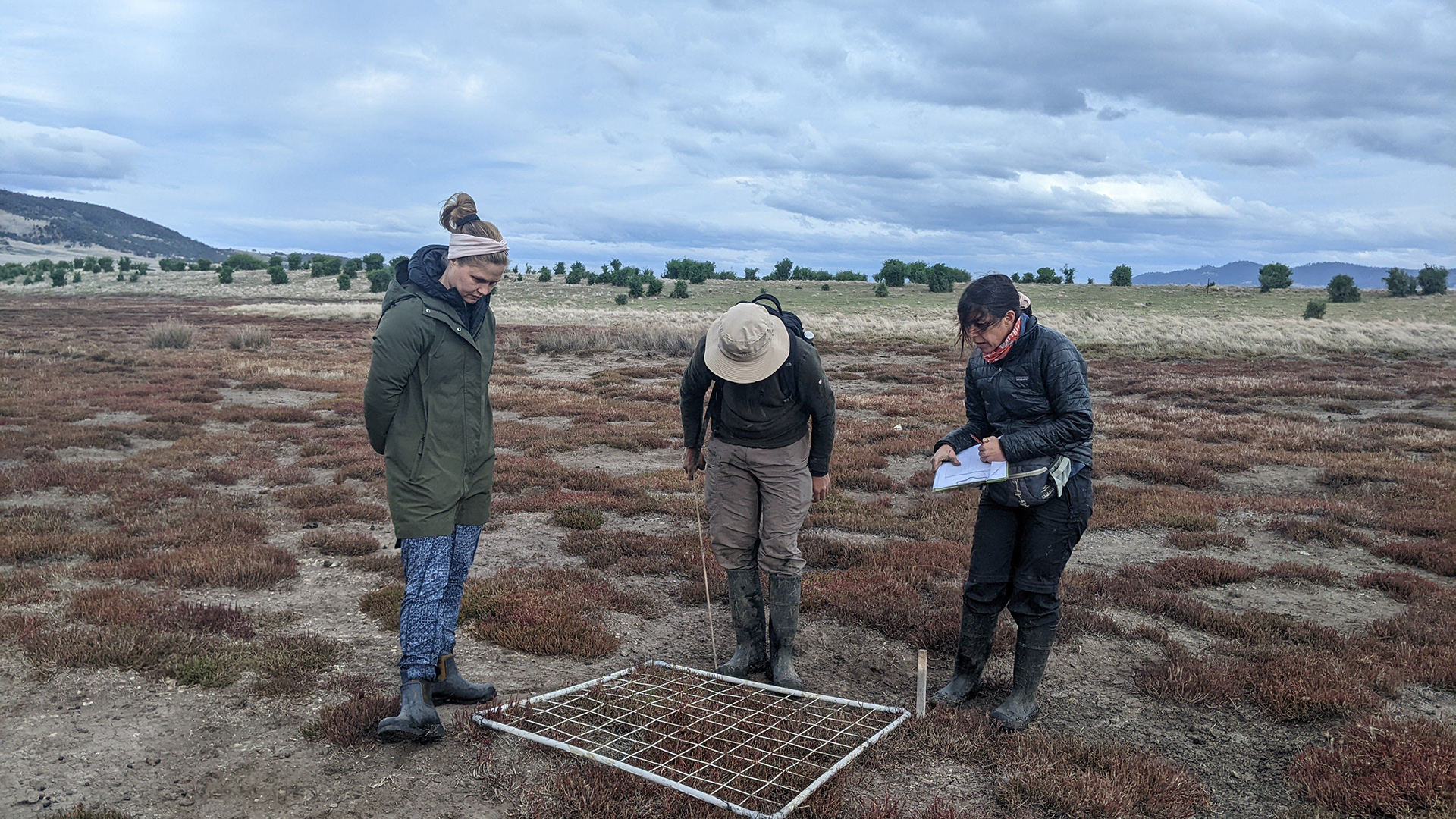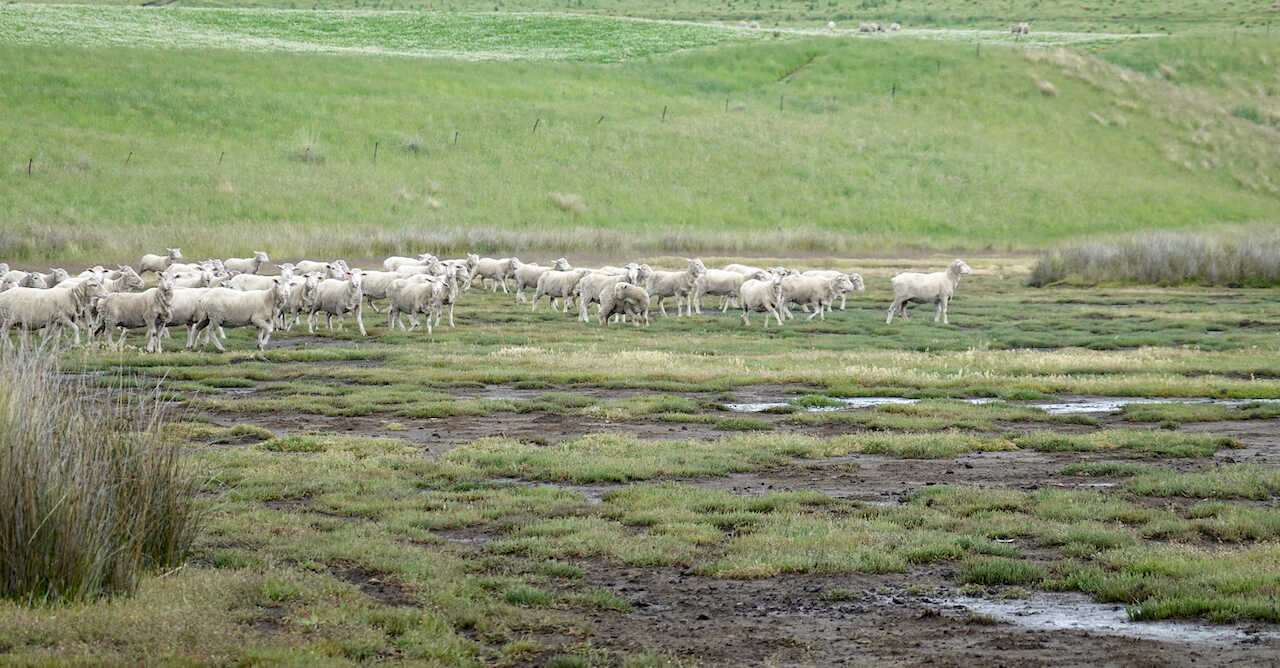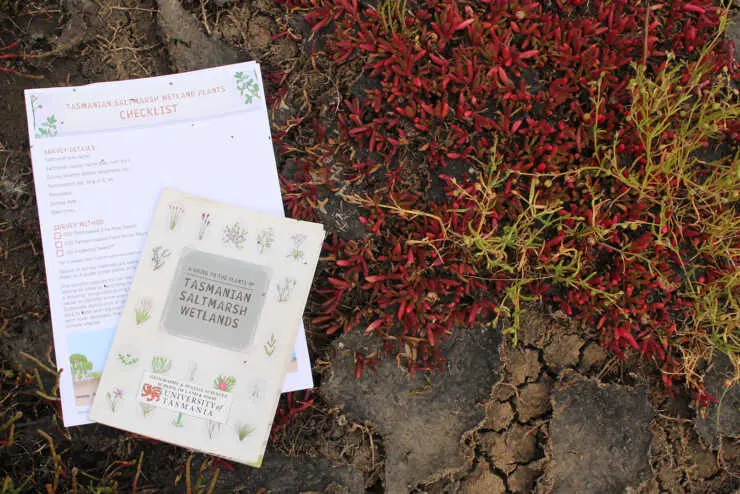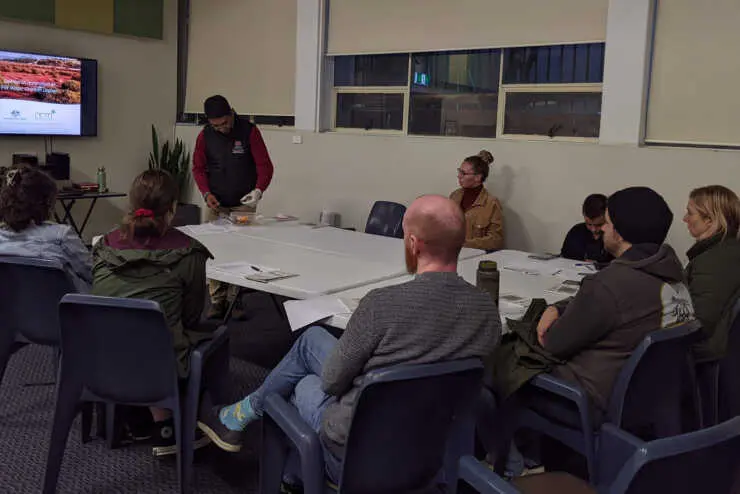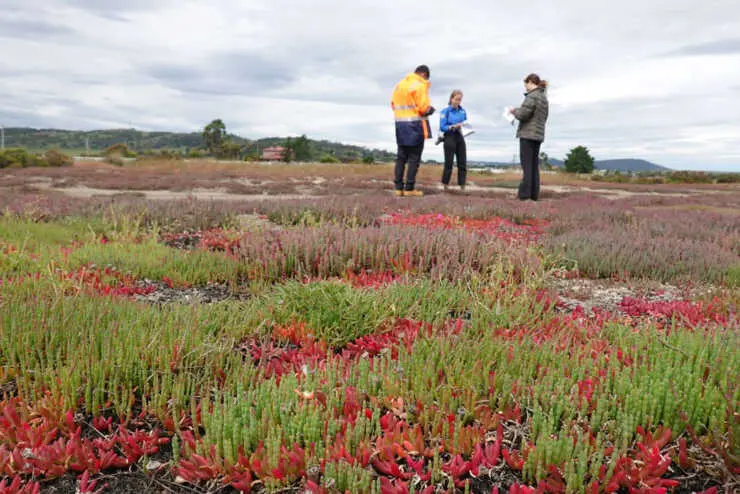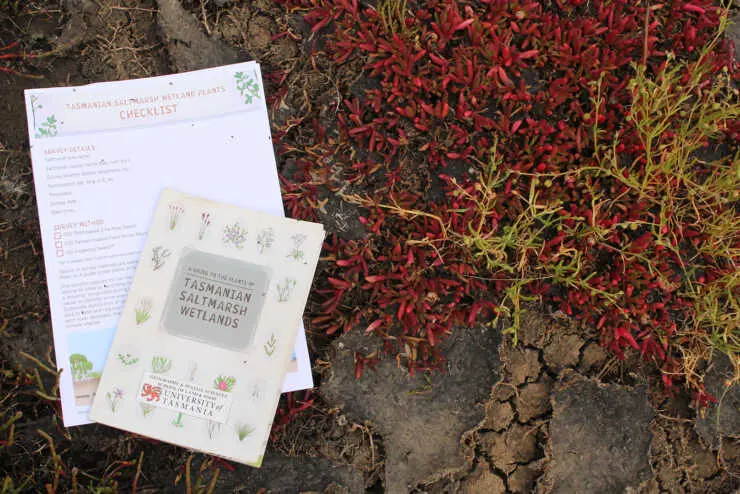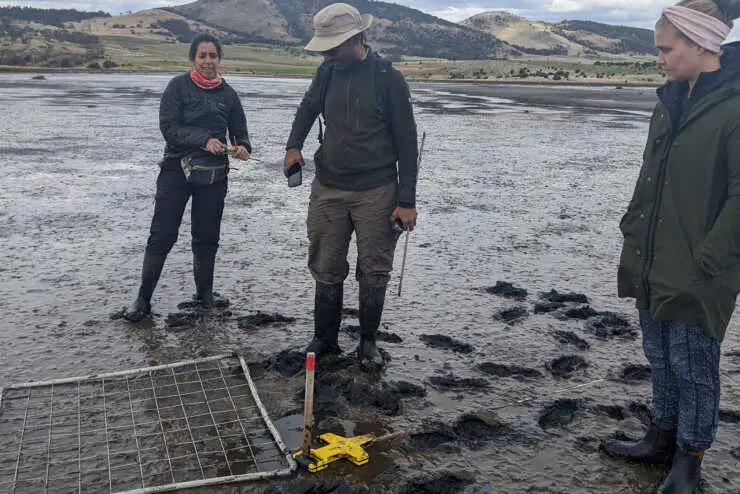2.1 km fencing
installed
5.9 ha weeds
controlled
5.9 ha native plants
revegetated
An internationally significant wetland
Pitt Water – Orielton Lagoon is a Ramsar listed wetland which supports a whole range of birds, fish, and other aquatic species. Researchers have found many fish species in Tasmanian saltmarshes including yellow-eyed mullet, greenback flounder and Australian salmon.
Saltmarshes are incredible ecosystems that not only provide fish with habitat, they also filter water and nutrients, improving water quality. In addition, saltmarshes capture and store carbon acting as carbon sink, reduce erosion and prevent flooding.
An agricultural past
Historically, bunds were constructed across Australia in order to drain wetlands and increase the land available for agriculture. Bunds dramatically altered flows and decreased the availability of healthy fish habitat.
To compound the issue, the hard hooves of cows, sheep and horses cause damage to the soil. This activity compacts the soft ground and changes soil structure, leading to erosion. Grazing has also been linked to increased weeds in some cases.
Did you know saltmarshes are important habitats for some of our favourite juvenile fish?
NRM South led this project to restore saltmarsh habitat in Pitt Water-Orielton Lagoon by working with partners including OzFish, the University of Tasmania and landholders, to fence off important saltmarsh, carry out weed control and native plant revegetation. It is expected that by taking these actions, the saltmarsh will be able to naturally restore in coming years.
Within this project, OzFish has delivered 8 community events. These events aimed to engage local recreational fishers in the restoration process, as well as increasing knowledge about saltmarsh as fish habitat, and teaching fishers valuable citizen science skills such as saltmarsh vegetation identification.
This project is supported by NRM South through funding from the Australian Government’s Fisheries Habitat Restoration Program. It is also supported by BCF – Boating, Camping, Fishing.





